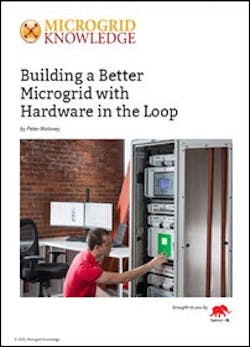The electric power grid is undergoing one of the most fundamental changes since its inception over a century ago. That transformation has been summed up as the “3 Ds,” which stands for digitalization, decentralization and decarbonization.
This value-added shift is being aided, in part, by new tools and processes, such as Hardware in the Loop (HIL) testing and more broadly Model Based Engineering (MBE). Using a single, coordinated virtual model as the basis for system development creates opportunities to save time and money in the design, testing, and operation, especially considering the wide variety of components that must function seamlessly to make the transformation possible and guarantee the safe, reliable and fundamentally flexible operation of the electric power grid.
As the electric power grid continues to evolve and becomes more agile and complex, the arguments in favor of MBE and HIL become more compelling. This is especially true when it comes to microgrids.
If the aim of a decentralized and digitalized grid is reliability and resilience, the digital tools used to design, test and integrate the components to achieve that end should be no less rigorous and up to date.
Download the new Microgrid Knowledge report, courtesy of Typhoon HIL, to learn more about new tools and processes like Hardware in the Loop (HIL) testing and Model Based Engineering (MBE) can pave the way to a better microgrid.
